The BionX SL “Super Light” 350 takes the proven, solid performance of the long-lived PL 350 and makes the motor 2.5 pounds lighter while upgrading the 37 volt battery to 48 volts for increased power, awesome! This is one of the highest quality, most feature rich electric bike conversion kits you can buy. It comes with throttle mode, four levels of pedal assist, regenerative “negative mode” and regenerative braking. Instead of using pedelec sensors to track rider input, it uses torque sensors built right into the hub motor making it less jerky and easier to install on the bike. Everything about this kit is high quality, and that’s why it costs about as much as a fully built electric bike.
Now that you know the up side, here’s the down side. BionX kits like this have to be installed onto a bike you already own. That’s a negative because it is time consuming, requires tools or further spend to have a bike shop do it for you. Sure, you probably already know this, it is an electric bike “kit” after all. But unlike some other electric bike kits, BionX systems take more finessing because they replace the entire rear wheel of a bike and that means you have to deal with the derailleur and chain rings. The other tricky bit is adjusting the brake lever system which controls regenerative braking in addition to normal “stop” braking.
Most full electric bikes come with Tektro brake levers that have sensors preinstalled. They tell the motor to shut off whenever you pull the brakes, or they tell the regen system to kick in. That’s also what the sensor does on a BionX kit except it isn’t built into the brake lever. You have to mount it yourself on the outside of the brake lever making it more exposed and ultimately vulnerable. It also means you can only mount the sensor to one brake lever, not both like most fully integrated bikes. The other negative about this and the rest of the BionX kits is that the power cables going from the battery pack to the hub motor and the computer and brake sensor to the battery pack aren’t integrated into the bike frame. It’s a bit less aesthetically pleasing, but it’s not the end of the world and wireless kits are just around the corner.
Back to the good stuff! The motor on the SL 350 kit is really the center piece. It’s an upgraded design from what is offered in the PL 350 kit and weighs 2.5lbs less. It’s brushless and gearless so it coasts silently and last longer than other geared hub motors. It also looks great, having seen the cutaway demo at Interbike myself and feeling the light weight of the motor when it was off the bike, it’s an amazing piece of technology. This light weight design combined with the 48v XL battery pack offers the kind of power that heavier riders will appreciate. It would also suit heavier mountain bike conversions well) and perform better in steep, off road environments.
BionX kits are perfect for people who already have bikes they love and just want to add electric assist. Whether your bike is a recumbent, folding or super light full suspension carbon mountain bike, this kit will take it to the high end of the ebike spectrum for $2K. The computer console has been designed to help you protect your very expensive bike and has two built in security features. If the LCD computer is removed from the bike the motor locks by engaging the highest torque regeneration setting. Also, the console comes with a password built in so even if it’s on the bike, a thief won’t be able to turn it on. With all of this said, if the SL is just too expensive and you’re willing to sacrifice a bit in terms of weight and power, you can spend ~$500 less and pick from one of the PL 350 options.
When choosing between the DT or RR version of this kit, take into consideration the mounting options given your frame and the weight distribution you care most about. I am always a fan of the down tube “mid-frame” battery mounting design because it distributes weight more evenly across the frame from front to rear. This makes the bike easier to pick up and carry, mount on car racks and handle when riding by avoiding tail slide-outs but it also takes the spot where you would otherwise put a water bottle cage. The rear rack by comparison, leaves the bike rear-heavy but provides a great space for hanging panniers or putting a saddle bag. The rear rack design weighs more than the down tube but for some bikes it may be the only option. The first picture below shows the DT (down tube) option with the gray triangle pack and the second picture shows the RR (rear rack) option which mounts to a metal rack. If you choose the second option make sure your bike has threaded braze-on eyelets for mounting a rack.
Note that some users have successfully drilled their own mounting holes for the down tube battery kit but that can compromise the structural integrity of the bike or may not be an option at all with carbon frames. Both battery designs are lockable and the rear rack design has a built in tail light for safety.
Depending on your bike setup, this kit is available with three wheel diameter options including 20″, 26″ or 700c which is equivalent to 29″. The rims themselves are available in silver or black spoke options to match your setup which is nice. Whichever version of this kit you decide on you’ll be getting technology that is feature rich and high quality backed by a solid brand.
Pros:
- Lightweight, redesigned hub motor is 2.5lbs lighter and more stylish than PL 350
- Battery pack offers extra power at 48 volts, great for climbing hills or supporting heavier riders
- Works with almost any bike, including those with smaller diameters like folding bikes and recumbents
- Both battery configurations lock to the frame for security and can be charged on or off of the bike
- Hub motor runs smooth and quiet (gearless and hubless) and has built in torque sensing and regenerative braking
- Rear-wheel hub motor exerts force onto the part of the frame that is designed to handle it vs. front hub designs, great if you mount to a bike with a front shock
- Works with disc brake setups as well as v-brakes
Cons:
- The amp hours of the 48 volt pack are 8.8 vs. 9.6 on the highest end PL kit meaning it won’t go quite as far. Still, 8.8 is much better than the low end 6.4 amp hour PL kit from BionX
- Installation is a bit complicated, time consuming or expensive if you hire it done
- With kits like this the wires and cables aren’t integrated into the frame vs. buying a pre-built ebike that might look a little nicer
- Trade offs in how you mount the battery: rear rack is heavier and unbalanced, mid mount takes water bottle spot
- This kit alone costs as much as a high end, fully assembled electric bike
- Throttle and computer may not mount as easily to road bikes with drop handle bars due to shape and size of tubes and grip tape
- The rear rack battery design includes a built in light but in many cases you still have to get your own front light vs. an integrated solution feeding from one battery source
- This kit is only compatible with 135 mm axle size so check your mountain bikes carefully or bikes with thru axles
Resources:
- Official Site: http://ridebionx.com/
- Official FAQ: http://ridebionx.com/services/faq-ebike/
- More Pictures: https://goo.gl/photos/4YcwsmLAp2McpvPN7

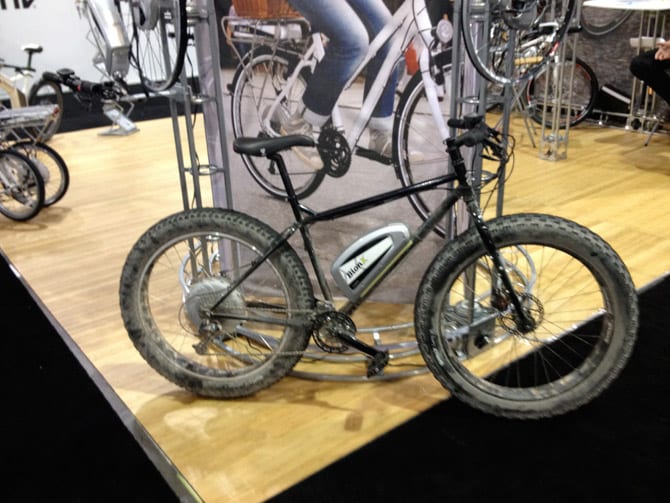

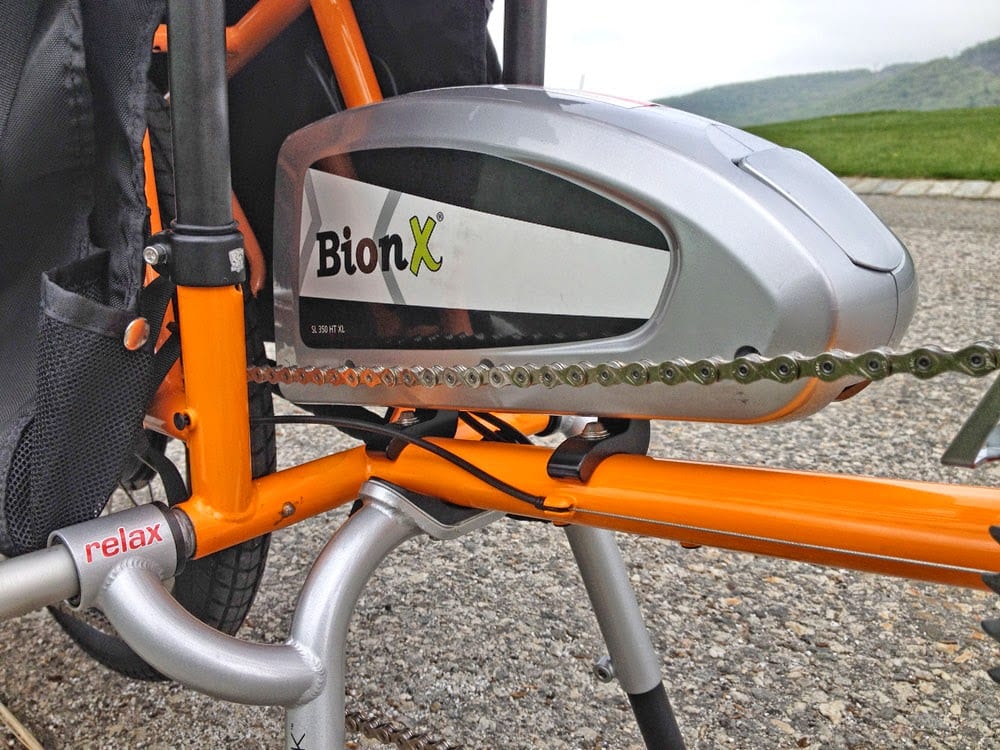
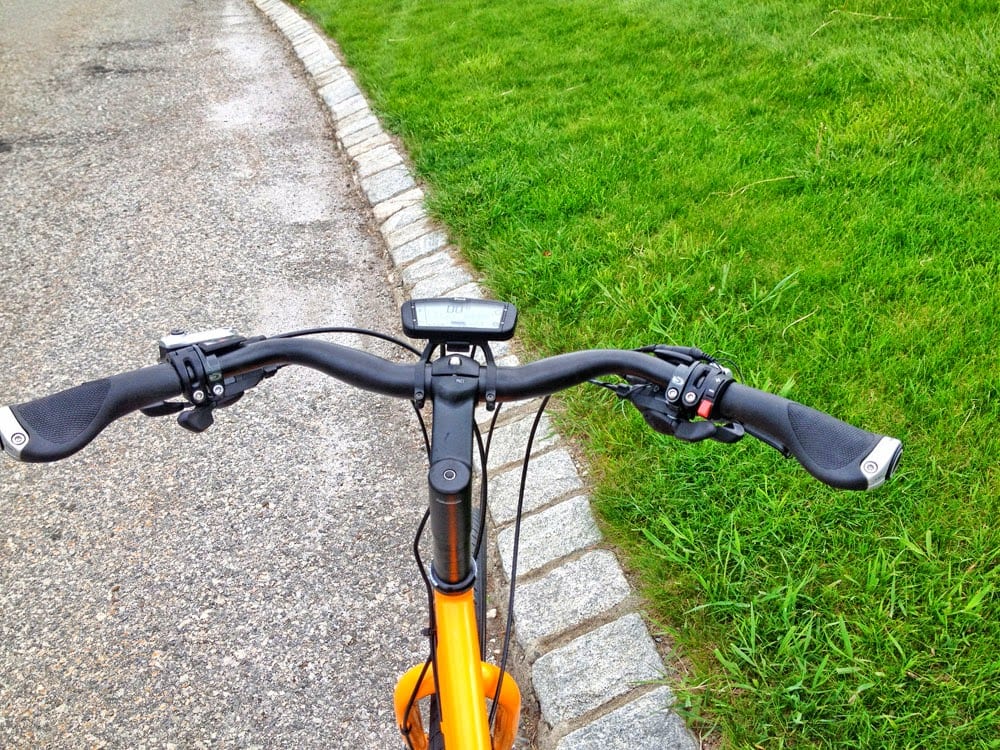
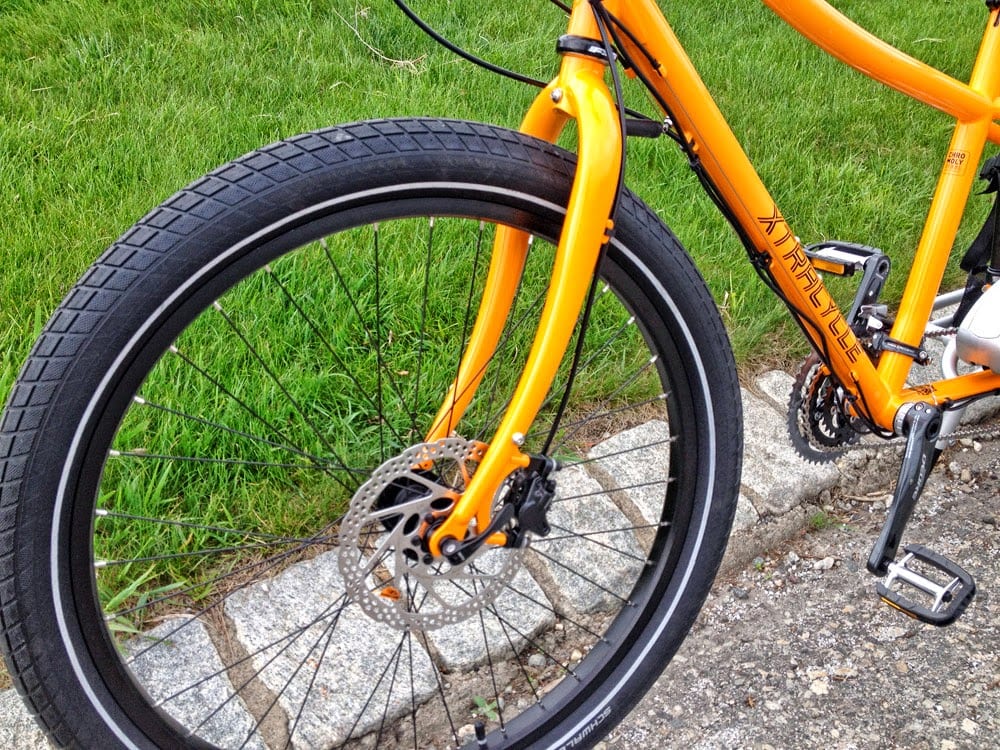
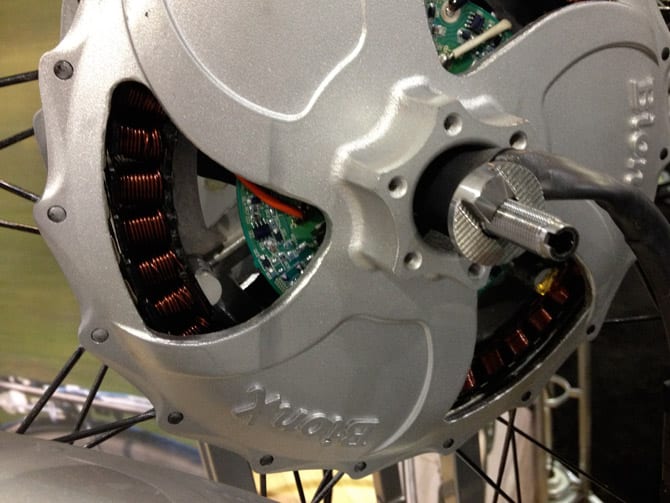

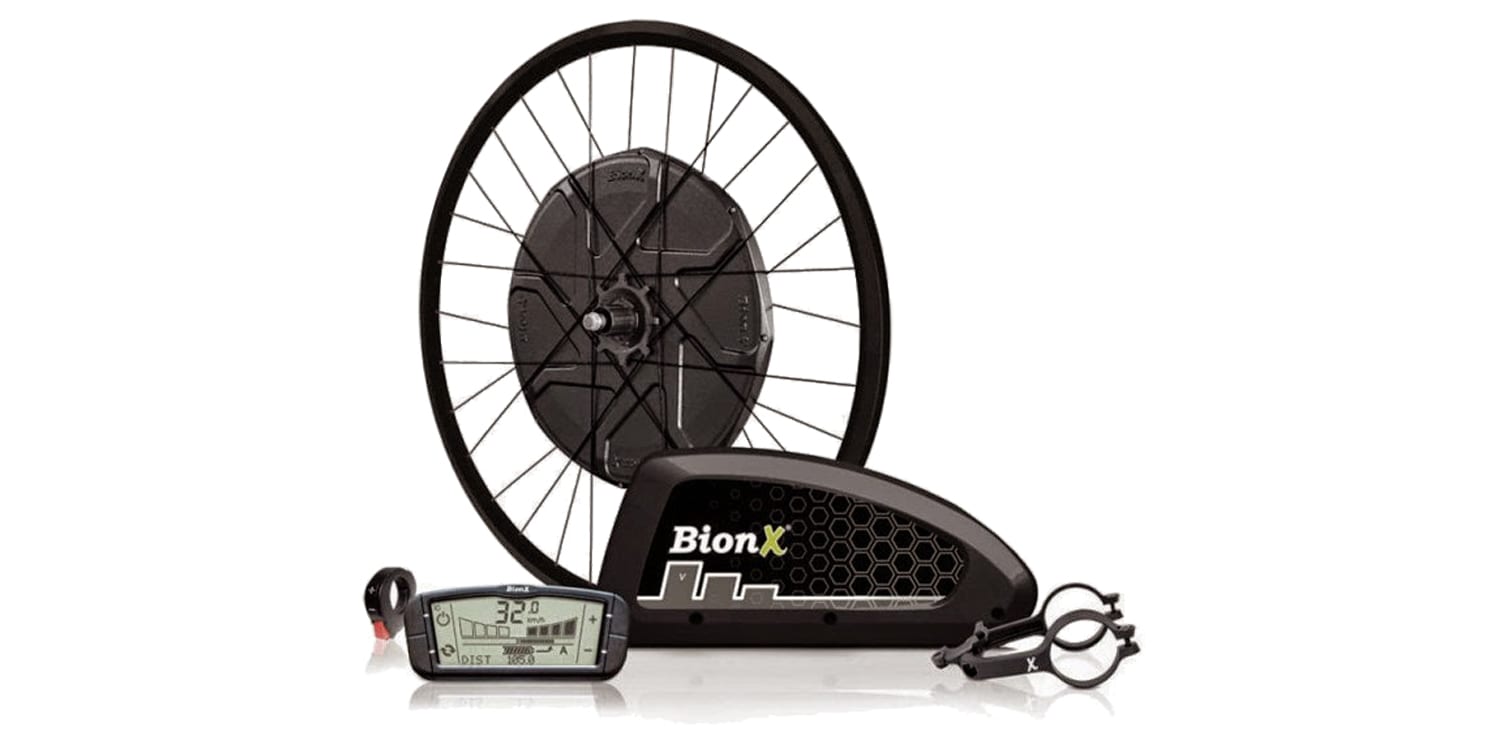
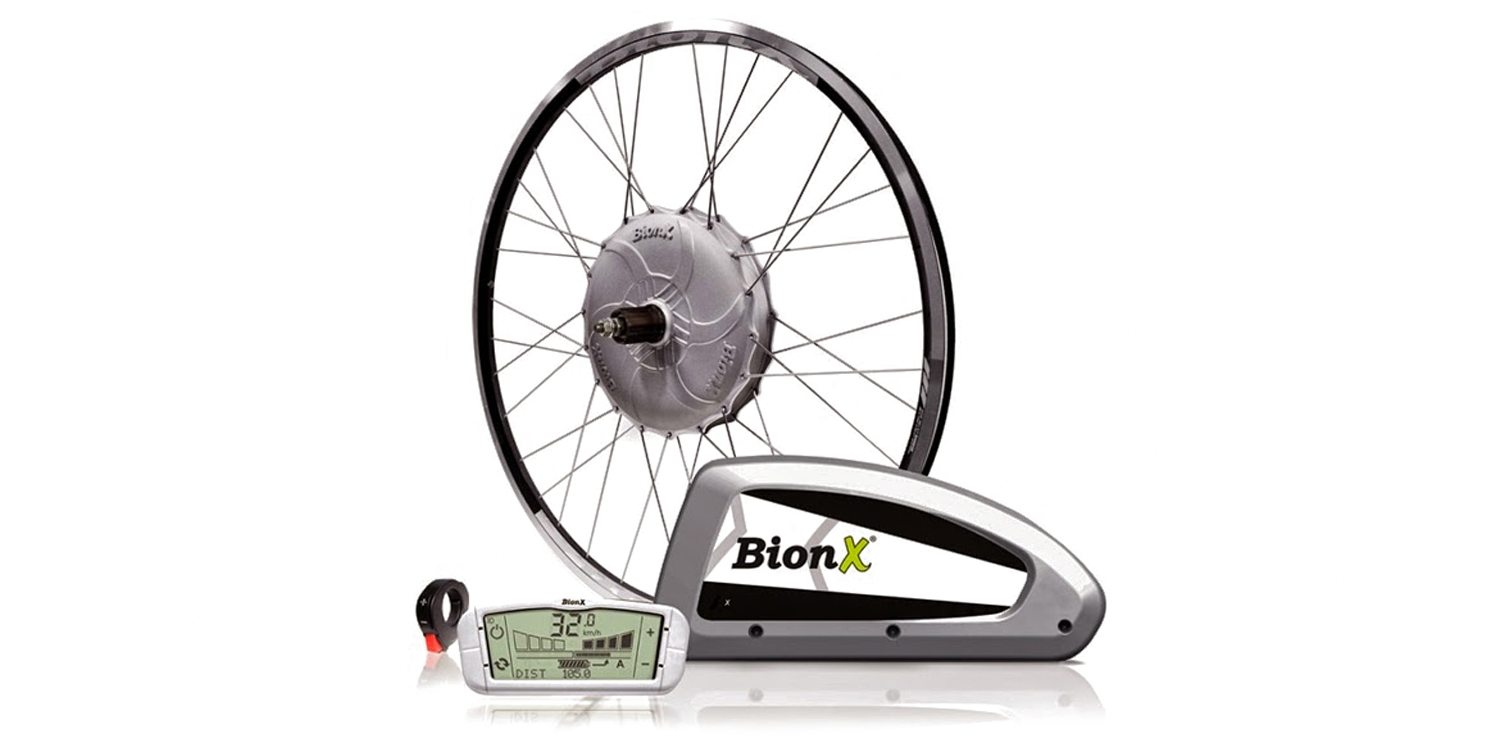
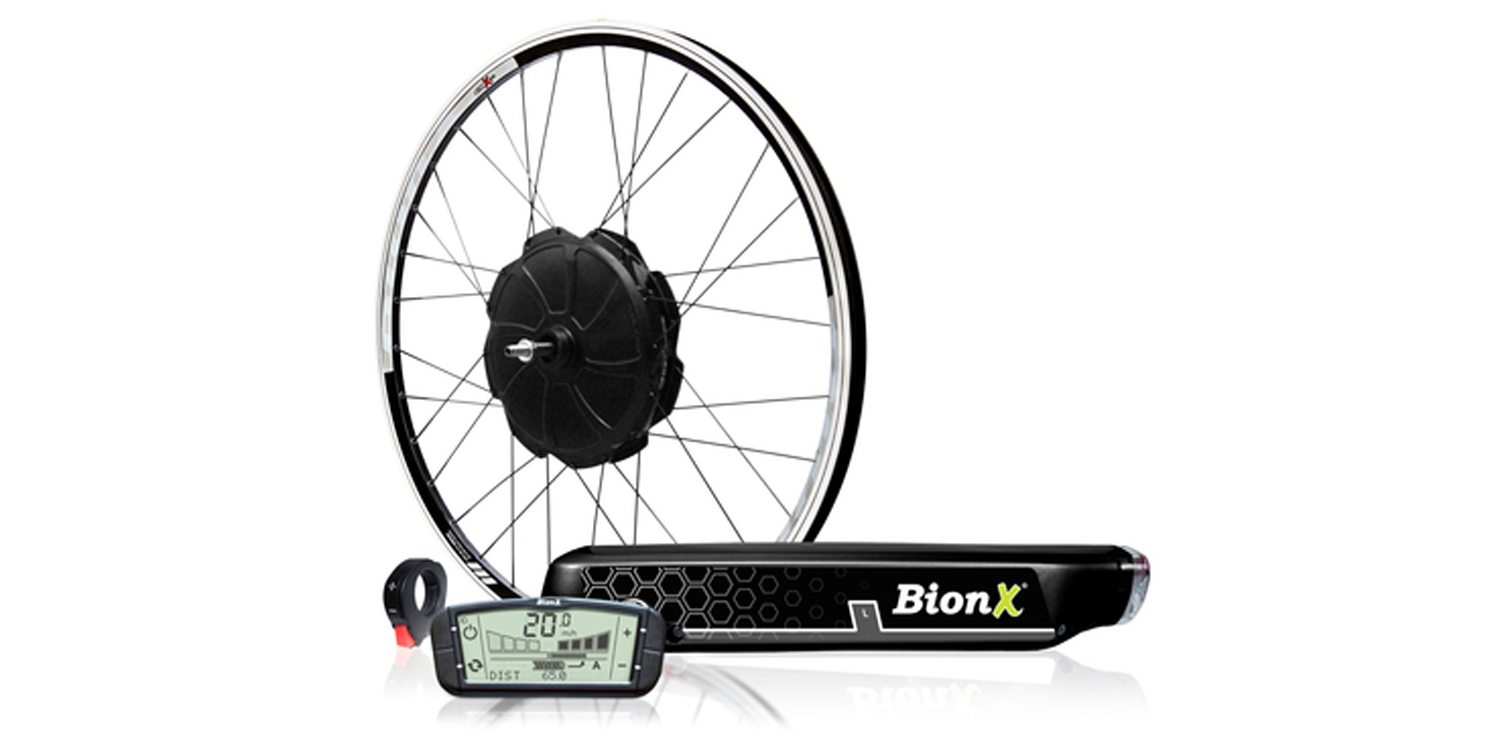
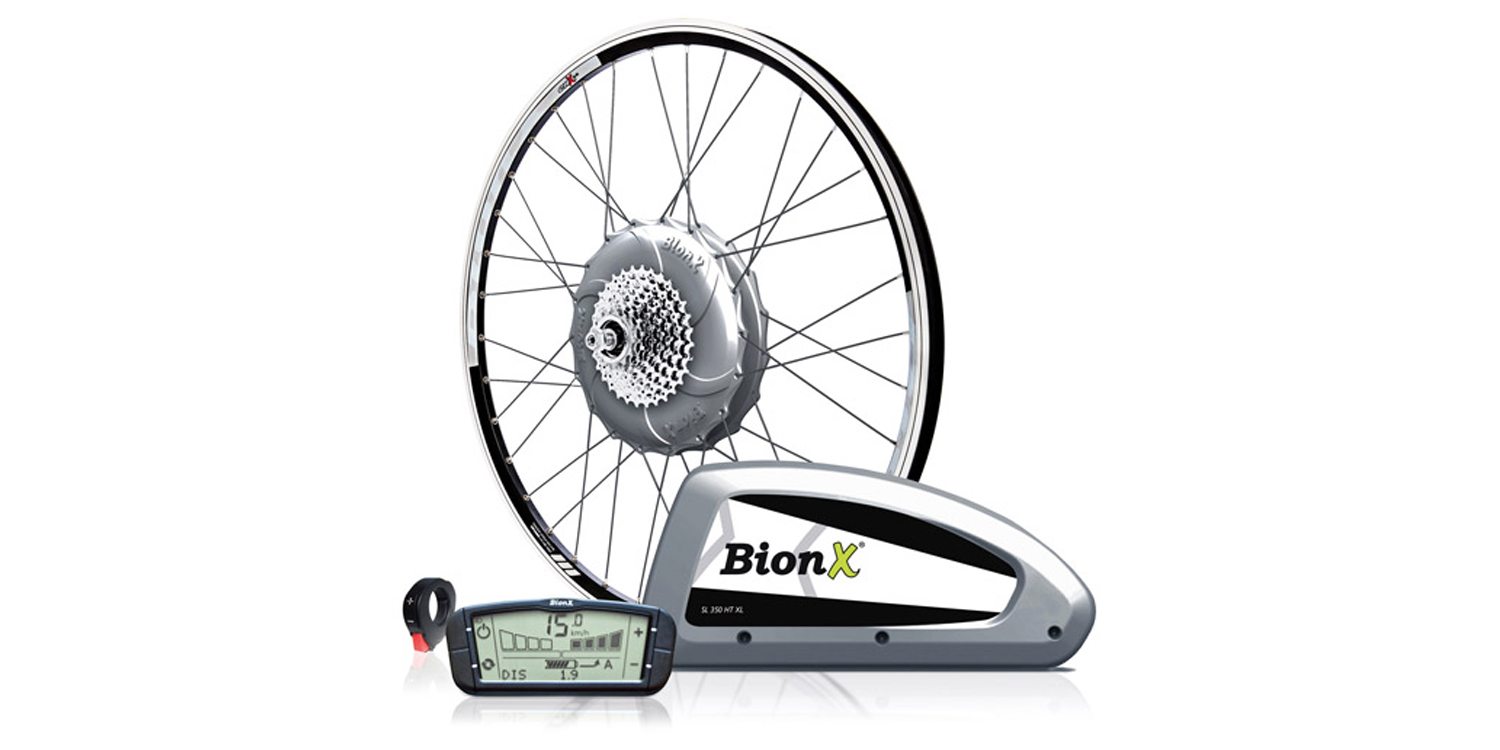
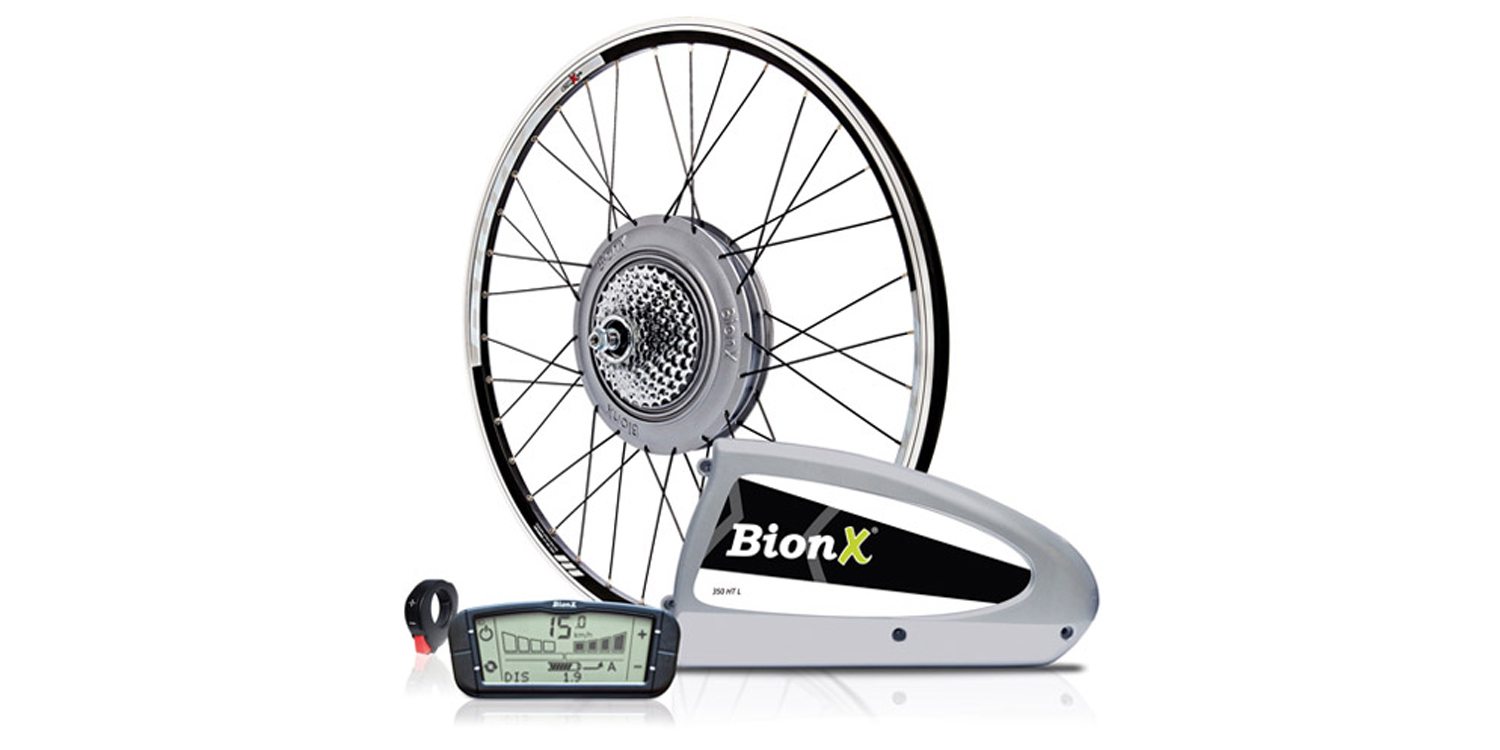
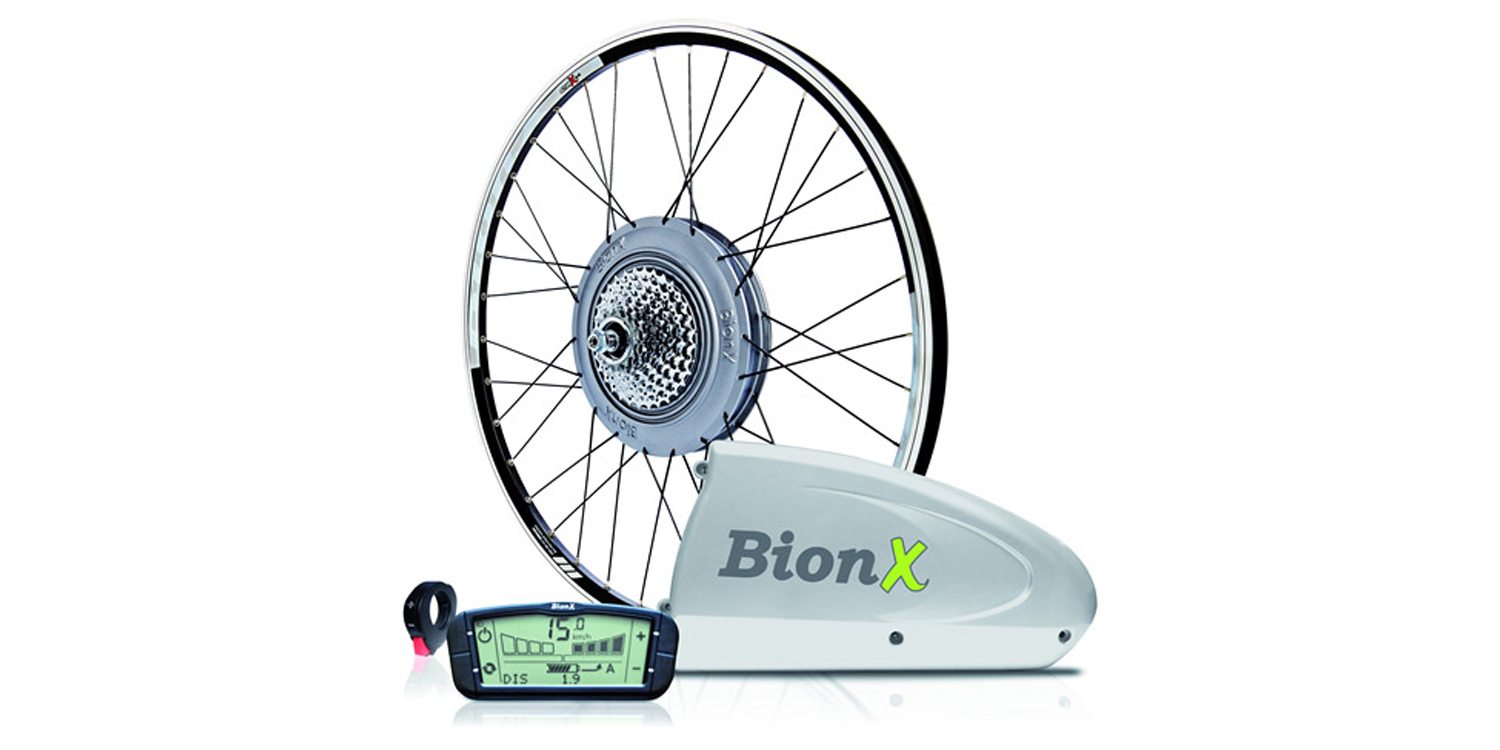
PAUL DEGARIE says
I installed the BionX 350XL 48V on a Raliegh 5.2- 27 SPD. Mountain Bike . I have over 3000 mi. of riding pleasure on this bike. My best millage is 49 mi. on one charge Utilizing the right mix of bike gearing and electric assist with re-gen whilst pedaling. Thumb throttle when necessary utilizing mostly plus mode to 4 to start and down assist to plus 2 average speed 12.5 MPH. Re-gen minus 1 except when going down a steep or long downhill grades then a higher re-gen -3 or 4 slow the bike down to 20 mph. Love to watch the battery bar accumulate energy on the plus side during re-gen thus increasing range. So I know I could achieve 60 plus miles in range under ideal weather conditions less than 5 mph headwind. My total cost of the bike with bells and whistles less than $2,600.00. ADVANTAGE I ride a bike that fits Me. Instead of riding a bike I have to fit into. Thanks Team BionX
E.Lynn Leaverton says
I had a sl 350 ht rr installed on my Rambler tadpole in 2013 and have ridden well over 6000 miles by January 2016.. My best power mileage was 52 miles Westbound on Idaho’s Trail of the Coeur da Alene. The motor has been strong and dependable. The only problem I had was a battery that would not take a charge which was in warranty and replaced quickly by Gary at NWrecumbent Cycles in Post Falls. You meet the nicest people on the bike trails in the Pacific Nortwest.
Court Rye says
Awesome! Sounds like you’ve had a great experience. Thanks for sharing the excellent service by NWrecumbent Cycles, they sound like a great shop :)